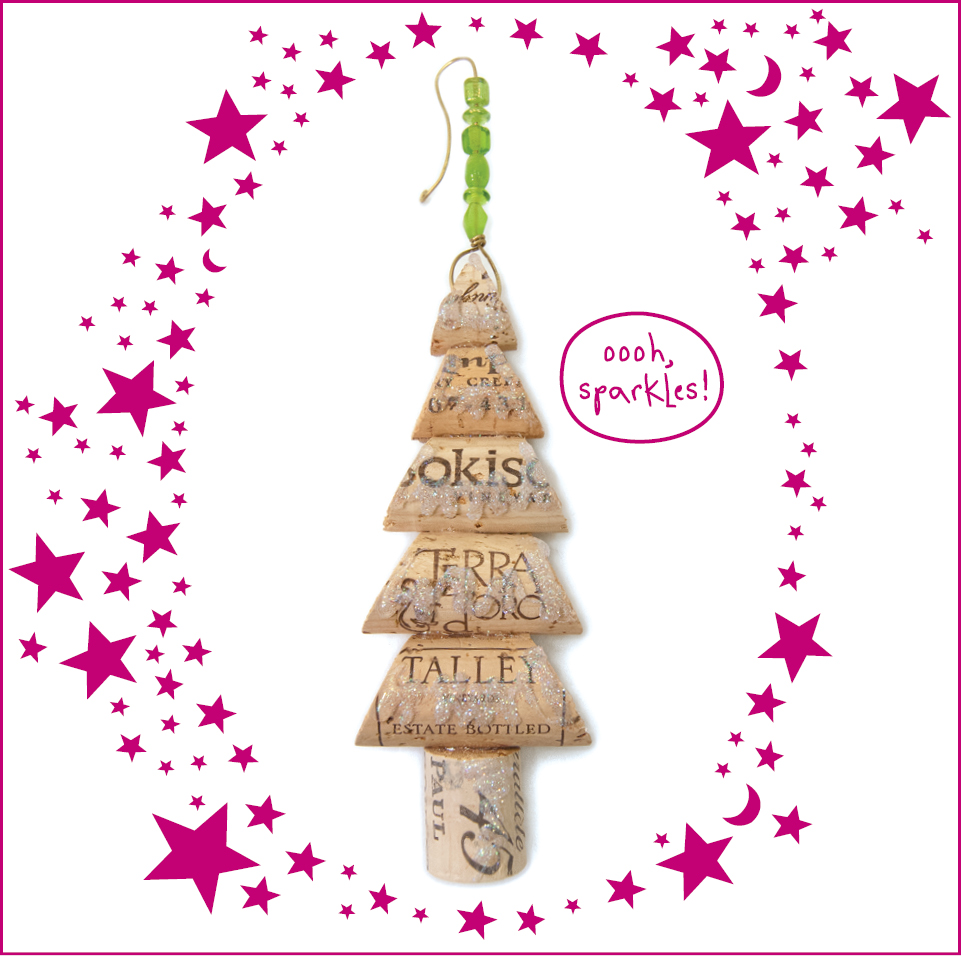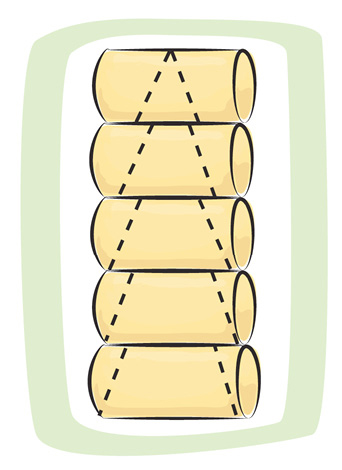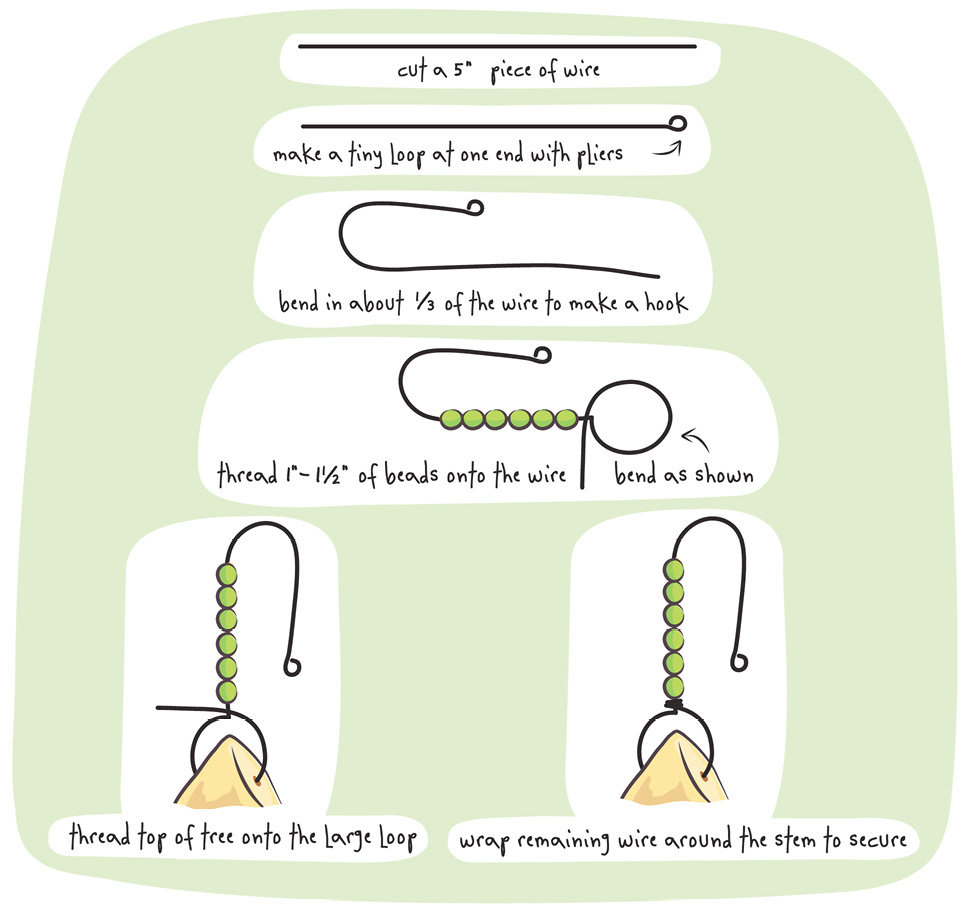

This rustic little tree would look great on its real-life counterpart or nestled into an evergreen wreath. You could even use it as a special gift topper, or glue one onto a wooden base to use in a little mantel scene.
* 6 corks
* Coping saw
* Sandpaper
* Power drill with 1⁄16" bit
* Hot glue gun
* Glitter glue
* 24 gauge craft wire
* Pliers
* Assorted beads


Wine Profile: Riesling
If Riesling were one of the grapes in Champagne, it would undoubtedly be the world’s noblest white grape, supplanting Chardonnay for the title. The physical and spiritual home of Riesling is Germany, where it’s been grown for at least five hundred years and possibly as long as 2,000 years. It thrives in the coldest vine-growing climates and has found excellent homes in Alsace, Austria, Canada, and in the northern United States, in areas of New York, Washington, Oregon, and Michigan.
Riesling is rarely blended with other grapes. It doesn’t need to be. It produces wines that run the gamut from bone dry and crisp to ultra-sweet and complex. Riesling is one of the few whites that have a long aging capacity. The finest will last for twenty years or more. Unlike Chardonnay, which relies on winemaker interventions for its style, Riesling relies on nature for its diversity. The winemaker really has only two decisions to make: when to pick the grapes and how long to ferment the juice.
The ripeness level of the Riesling grape at harvest drastically conditions the personality of the finished wine. In Germany, where ripeness levels vary from year to year, a system was developed to convey that ripeness level to consumers. Germany’s Riesling’s can de designated “Kabinett” (least ripe) all the way to “Trockenbeerenauslese” (ripest, late harvest).